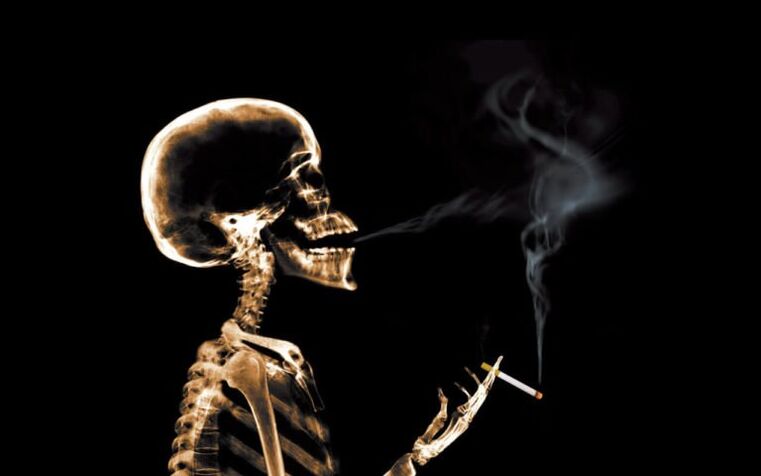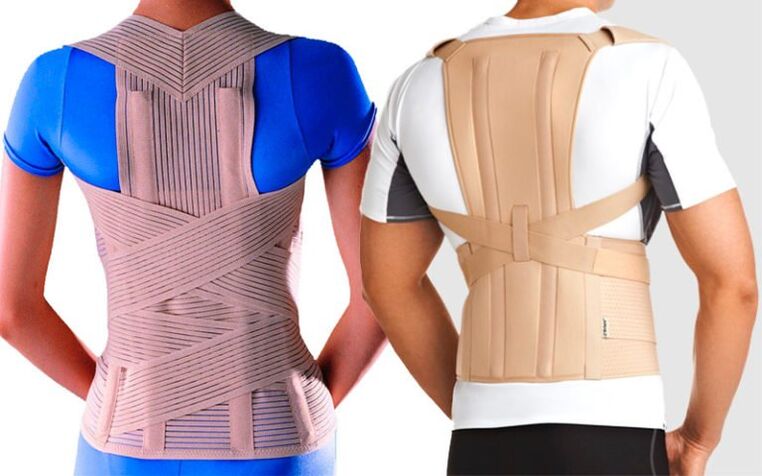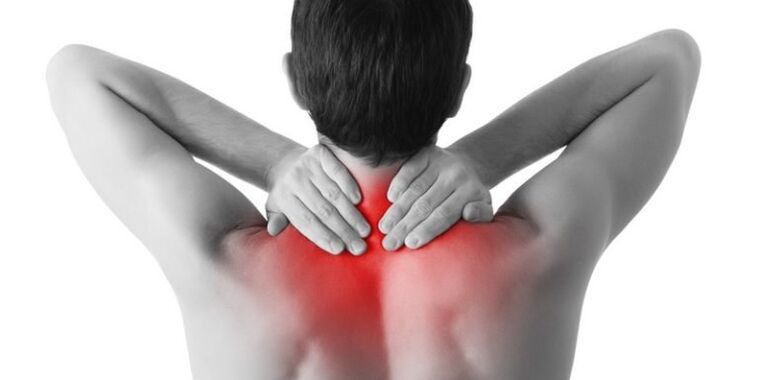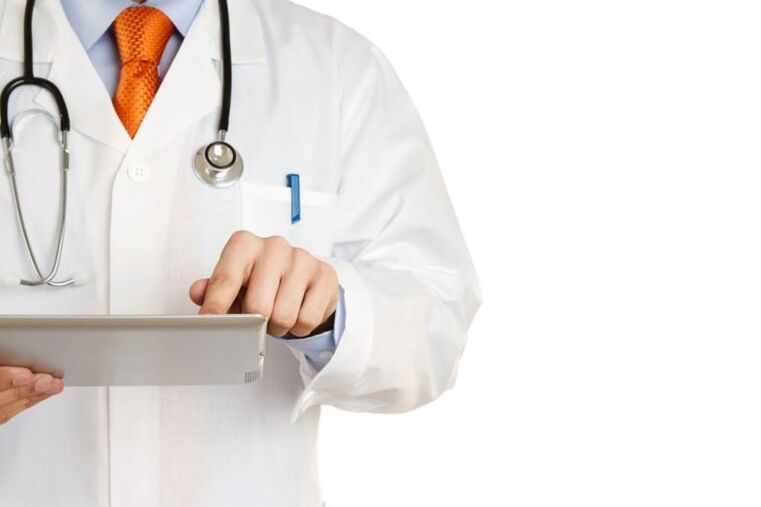If a person has back pain in the region of the shoulder blades, he automatically associates this with the condition of the spine. They are partly right: this long-suffering core of our skeleton bears heavy loads, which can only affect its condition.
But often pain in this area of the back signals a disorder of the internal organs. The nature of the pain corresponds to the disease, so it is important when making a doctor's appointment to describe its manifestations in as much detail as possible.
What are the causes of shoulder pain
Pathological changes in:
- spine;
- internal organs;
- surrounding structures.
It hurts in the scapular region and with some rare diseases:
- Spinal fractures and its systemic injuries;
- Spinal metastases in cancer of the stomach and sometimes other organs.
Pain depending on the type of disease is localized:
- Above the shoulder blades;
- Under the shoulder blades;
- Between the shoulder blades;
- In the shoulder blades.
Symptoms associated with pathologies of internal organs
The stomach, lungs, liver, and heart can project their pain below the shoulder blade - right or left.
If it hurts on the left, it may be a sign:
- Peptic ulcer of the stomach: the pains are periodic in nature, associated with exacerbations of a seasonal nature. They are accompanied by pain in the upper abdomen. When increasing pain, vomiting occurs;
- Myocardial infarction: the disease is accompanied by acute retrosternal pain, extending under the left scapula. Cardiac ischemia has similar signs, but in this case pain sensations also occur in the left hand;
- Breakthrough of a stomach ulcer: the patient's body is covered with cold sweats, he may feel bad until the onset of vomiting. The patient tries to relieve the pain by changing position, but these actions do not give the expected effect;
- Intercostal neuralgia: the pain under the left scapula comes in attacks, aggravated by the slightest physical effort. It tingles and burns in the region of the heart. It hurts to cough and breathe deeply.
It can hurt under the right shoulder blade when:
- Psychological failures in the body. At the same time, the patient feels warmth in the chest, he may complain of pinching and tingling in the heart muscle;
- Pathological changes in the gallbladder: additional symptoms - bitterness in the mouth after fatty, salty and fried foods, pain in the right hypochondrium;
- Pleurisy and pneumonia: pain under the right shoulder blade is reflected when coughing;
- Kidney diseases: in this case, the cough also leads to increased pain, but unlike lung diseases, the patient has difficulty urinating.
Pain associated with spinal pathologies
Spinal problems can occur after injuries, fractures or bruises. But there are also diseases that have no obvious causes. And all of them are manifested by pain in the scapular region.
With any pathology of the spine, pains between the shoulder blades should be joined:
- stiffness;
- Goosebumps sensation;
- Numbness.

Interscapular pain when coughing is typical of heavy smokers.
Osteochondrosis
If the nutrition of tissues is disturbed, dystrophic changes occur in them. In the spine, this process affects the intervertebral discs. They can no longer resist the pressure exerted on them by the vertebrae. The loss of elasticity of the disc leads to compression of the spine. The nerve endings in the spinal cord are under pressure - this is where severe pain occurs.
The body tries to protect the spine from heavy loads by developing bone tissue along the edges of the spinal processes. Bony growths are called osteophytes. They can be removed, but against the background of osteochondrosis they will grow back.
Pain in osteochondrosis is localized at the site of spinal injury. If the cervical region is affected, the patient has pain in the morning on the right side of the neck. The pain radiates to the shoulder and arm, is felt on the shoulder blade. The head may feel dizzy, the torment is aggravated by deep breathing and coughing.
Osteochondrosis of the chest region is manifested by pain between the shoulder blades - on the right and left of the spine. The pain can be aggravated by sneezing, coughing and sudden movements. When you try to straighten your shoulders, the chest and interscapular area begin to crackle.
It becomes difficult for a person to breathe through the chest, as the mobility of the ribs decreases, and he subconsciously switches to breathing with his stomach.
Treat osteochondrosis with a conservative method. The patient is prescribed:
- Analgesics and anti-inflammatories;
- Physiotherapy procedures;
- Therapeutic gymnastics;
- Reflexology;
- Massage;
- Traction of the spine;
- Manual therapy.
If none of the treatment methods work, the surgeons get to work.
Spondylarthrosis
The symptoms of this disease are similar to those of osteochondrosis. But in this case, the intervertebral disc is displaced, not depleted. The hyaline cartilage is forced to take on the load. Under these extreme conditions, its tissue thins and loses its ability to perform its functions.
If spondyloarthrosis is left untreated, the entire joint can become inflamed and then completely lose mobility. The patient's condition is aggravated by osteophytes.
Scoliosis
The curvature of the spine relative to its axis to the right or to the left is common - almost half of humanity is affected by this disease. But for the majority, the disease is not pronounced, and therefore the pains appear periodically - if a person has strained his back too much, or stood or sat in one position for a long time.
Early scoliosis cannot be determined visually, therefore, if pain occurs in the scapular region, it is in the patient's best interest to seek medical attention. He will prescribe an X-ray - direct and lateral.
With the further development of scoliosis, it can be detected independently: the "zigzags" of the spine become clearly pronounced. Common scoliosis is also determined by the relative position of the shoulders - one will be lower than the other.

Scoliosis treatment is a time-consuming affair even at its high intensity. Massages, special exercises and wearing a corset will help get rid of the curvature of the spine.
Intervertebral hernia
The intervertebral disc is made up of:
- gelatinous core;
- Fibrous ring, composed of fibers;
- The two thin layers of cartilage that cover the discs above and below.
The core is located inside the ring, and the cartilaginous tissue, closing the structure, simultaneously serves as a conductor of nutrition from the vessels of the vertebral body to the disc.
Pathological changes in the vertebrae lead to a disruption of metabolic processes in the intervertebral discs. Their thickness decreases, the fibrous ring cracks under the influence of loads, opening the way to the outside of the gelatinous mass of the nucleus. This process is accompanied by severe pain. It is concentrated in one point, but sometimes there is a return to the pulmonary and cardiac regions.
An intervertebral hernia in the thoracic region is extremely rare, therefore, when pain appears in the scapular region, the patient is first checked for other diseases.
An intervertebral hernia is treated with anti-inflammatory drugs, physiotherapy and special exercises. In severe conditions, only surgery can help.
Tuberculosis of the spine
Tuberculosis microbacteria can affect any part of the spine, but 60% of cases occur in the chest area. Most often, men suffer from this disease. Basically, a few vertebrae are involved in the process, but there are cases where tuberculosis spreads to three or more.
Symptoms of the disease can vary depending on the number of vertebrae affected. But there is one constant symptom - it's pain. If it is felt between the shoulder blades, this indicates an injury to the cervical vertebra.
It also hurts with tuberculosis of the chest region, but in this case the pain will radiate (give) to the chest, groin or abdomen. Patients complain of burning, twisting, "piercing" in the back.
Tuberculosis of the spine is difficult to diagnose, severe pain appears already at the stage of the appearance of various complications. If you have the slightest suspicion of this disease, immediately go to a specialist for an examination.
Overvoltage and hypothermia
If the back is excessively overloaded, painful sensations may also appear in the scapular region. In itself, this phenomenon is not considered a disease, but constant overload can cause osteochondrosis, curvature of the spine and the formation of intervertebral hernias.
Seamstresses, drivers, surgeons, people engaged in sedentary work, etc. complain of back pain. If hypothermia (draughts, working air conditioner) is added to the surge, then back pain can be taught - severe pain concentrated under the shoulder blades or in the spine.
This disorder is treated with warming ointments, anti-inflammatories and massage.
Myositis
Influenza, SARS, severe hypothermia can lead to myositis - inflammation of muscle tissue. Most often, this disease affects the muscles located in the scapular region. This condition does not threaten the body with anything terrible, but aching pain creates discomfort.

Pain in the shoulder blades
Pain occurs for several reasons:
- Fracture or injury resulting from a fall. The shoulder joint swells, it hurts to move the limb;
- Osteomyelitis (inflammation of bone tissue): accompanied by fever, fever due to intoxication of the whole body;
- Pterygoid scapula: this effect is caused by damage to the anterior dentate (located on the side of the chest), paralysis of the rhomboid, trapezius muscles or their traumatic rupture (from which circus acrobats and gymnasts suffer, professional sportsmen).
If the synovial sac is inflamed, the scapula begins to crack. In addition to this disorder, the patient is worried about heaviness and clicks in the shoulder joint.
Diagnostic
Pain in the scapular zone of the back signaling one of many diseases, the examination is carried out using various methods:
- pulmonary radiography;
- laboratory research;
- ultrasound;
- Magnetic resistance or computed tomography;
- ECG.
All examinations are prescribed by the surgeon - if you have back pain, go to him first. But in the future, based on the results of the search, he will need advice:
- Orthopaedist;
- Gastroenterologist;
- Neurologist;
- Pulmonologist.

If for some reason the doctor did not pay attention to the accompanying symptoms, go to consult on your own initiative.
Processing
Self-medication for pain in the scapular region is categorically contraindicated. The maximum that the patient can afford is to take painkillers and painkillers. The reception should be one-time and only if it is necessary to stop the pain syndrome before consulting a doctor.
The treatment is prescribed by a doctor: usually, to relieve the condition, it is enough to take analgesics, chondroprotectors, anti-inflammatories. Further, the doctor paints a therapeutic scheme designed to eliminate the root causes of pain in the scapular region.

















































